Taiwan is one of the world’s most densely-populated countries, yet it has a remarkable amount of woodland. According to the government’s Third Survey of Forest Resources and Land Use, completed in 1995, 58.5 percent of Taiwan is covered by trees or bamboo. Hardwoods account for more than half of that total.
That official figure may actually be an underestimate. A paper co-authored by Academia Sinica scientists, published earlier this year in Scientific Reports, concludes that the current proportion of woodland is just over 65 percent.
Despite urban sprawl, the country’s forests have expanded since the 1980s, in part because the government outlawed all logging in natural forests in 1991. From time to time, however, valuable species are felled by illegal loggers known as “mountain rats” (山老鼠).
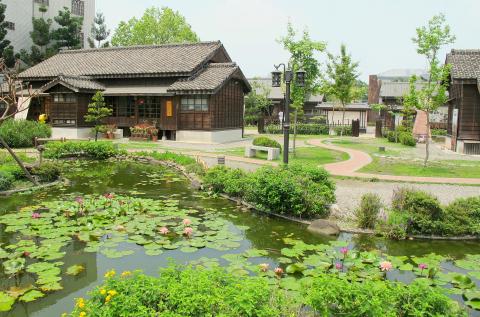
Photo: Steven Crook
While the island’s commercial forests still produce timber, in recent years Taiwan has imported more than 95 percent of the wood it uses, much of it from Southeast Asia.
The logging ban means that “we are just exporting deforestation, often to countries with less sustainable forest management,” Taiwan Forestry Research Institute researcher Chang Li-wan (張勵婉) told the World Forestry Center in Oregon in 2013.
The logging prohibition also prevents the authorities from thinning weak trees or snags. These remain in place until they’re displaced by a typhoon and washed into a mountain creek or reservoir.

Photo: Steven Crook
None of the lowland sites featured in this article focus on the challenges facing Taiwan’s forest managers. Instead, they offer insights into a now-defunct industry. In all cases, entry is free.
JHUDONG TIMBER INDUSTRY EXHIBITION HALL
Jhudong (竹東) is a nondescript town in Hsinchu County and a stop on the Neiwan Line (內灣線). That railroad, which now carries commuters on weekdays and tourists on weekends, was built more than 60 years ago to transport timber and coal extracted from the nearby hills.
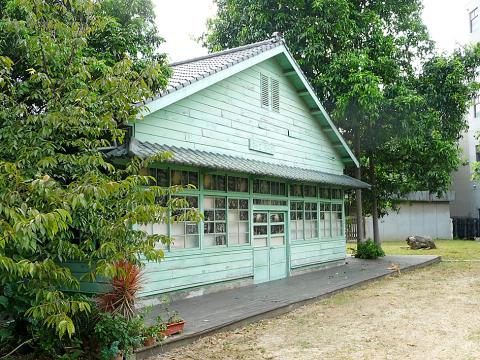
Photo: Steven Crook
Lumber from logging outposts near the line’s terminus in Neiwan, such as Mount Siangshan (香杉山) and Luchang (鹿場), was sent to Jhudong for processing. In the early days, many of the trees cut down were red or yellow cypresses more than 3,000 years old.
At the industry’s peak in the 1960s, much of the land within 3km of Jhudong Railway Station was occupied by sawmills and related facilities. On a plot of land which still belongs to the Forestry Bureau, an elegant 76-year-old wooden building now serves as Jhudong Timber Industry Exhibition Hall (竹東林業展示).
Many of the items displayed inside, among them a spectacularly battered safe, are labeled in English as well as Chinese. Old photos make it clear that, until the widespread use of trucks after the mid-1960s, human muscle was key when shifting timber to the nearest railway line.
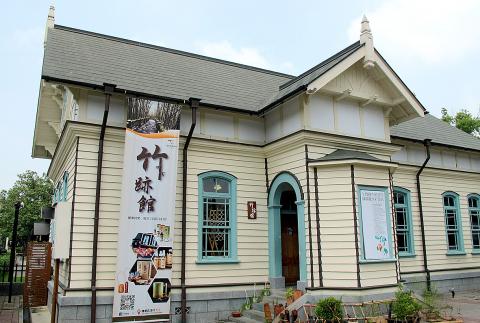
Photo: Steven Crook
After World War II, Taiwan’s loggers began to use American equipment, and the hall displays a 1961 chart from a US supplier which explains the benefits of kiln-drying timber. Apparently, it increases strength; makes the wood more suitable to manufacture musical instruments; makes it much easier to attain the ideal moisture content; and, by reducing moisture and thus weight, makes wood easier to transport.
LUODONG FORESTRY CULTURE PARK
Just as the Neiwan Line carried lumber down from the hills of Hsinchu County, the narrow-gauge Luodong Forest Railway (羅東森林鐵路) in Yilan County once served logging operations around Taipingshan (太平山).
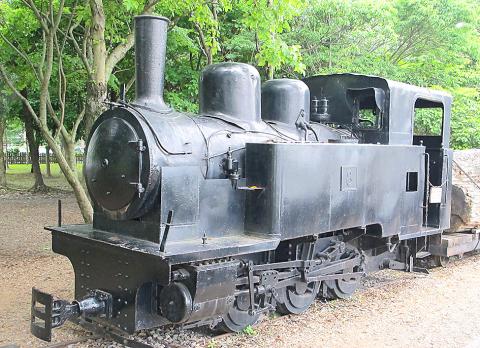
Photo: Steven Crook
The railroad’s final station, before it linked up with the main railway network at Luodong Railway Station, was called Jhulin (竹林). Part of that station, along with six old locomotives and various office and dormitory buildings, are preserved within Luodong Forestry Culture Park (羅東林業文化園區).
This sprawling park, within walking distance of Luodong’s downtown, also contains several Japanese colonial-era buildings (some of which are more than 90 years old) and a pond as big as 45 Olympic-size swimming pools.
It was here that certain high-mountain tree species were stored before they were sent off to customers. The water not only stopped the wood from warping or cracking during the hot season, but also drew resins out, thereby lengthening the wood’s lifespan.
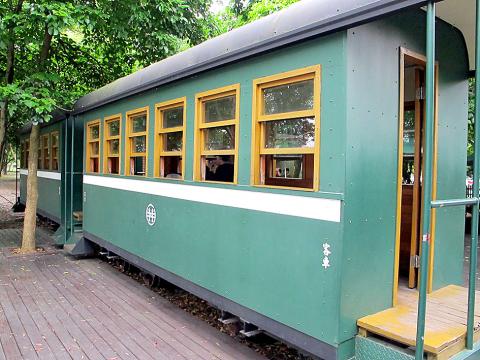
Photo: Steven Crook
Huge tree trunks break the surface of the water. Timber of this kind is valuable, and its presence implies the facility was abandoned by a fly-by-night businessman. Nothing could be further from the truth — like dozens of other state-owned sites around the country, operations here were wound down over a period of several years.
The park is a fine destination for those who like to be outdoors. At the same time, there’s quite a bit for people who’d rather read about the tough working conditions endured by forestry workers.
One black-and-white photo shows a group of workers and their dependents using an open-sided cargo cable car to travel from the plains up to a logging camp in the mountains. At least one baby boy was given the name Lan-che (纜車, cable car) because his mother gave birth during such a journey!
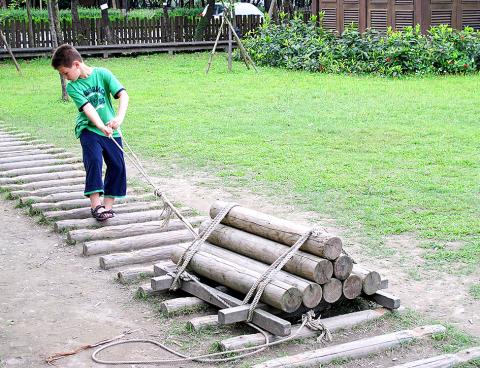
Photo: Steven Crook
CHIAYI CITY’S FORESTRY RELICS
Chiayi City is the lowland terminus of Alishan’s famous logging railway, and the neighborhood northeast of the railway station is dotted with sites related to the forestry industry.
A popular tourist destination is Hinoki Village (檜意森活村), where 30 Japanese-style bungalows built for forestry executives and their families have been refurbished and converted into quaint shops and art galleries. Opening hours vary; many are closed on Mondays. The village is at the intersection of Linsen East Road (林森東路) and Gonghe Road (共和路).
A more unusual structure stands at 370 Gonghe Rd. This is the 105-year-old former Chiayi Forest Management Club (營林俱樂部), currently known as the Bamboo Pavilion (竹跡館). Name notwithstanding, no bamboo was used to construct this cream-colored, Tudor-influenced building; it’s almost entirely wood. The pavilion is open from Tuesday to Sunday, 10am to 5pm.
Steven Crook has been writing about travel, culture, and business in Taiwan since 1996. He is the co-author of A Culinary History of Taipei: Beyond Pork and Ponlai, and author of Taiwan: The Bradt Travel Guide, the third edition of which has just been published.
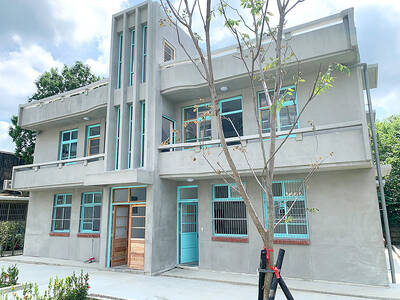
June 2 to June 8 Taiwan’s woodcutters believe that if they see even one speck of red in their cooked rice, no matter how small, an accident is going to happen. Peng Chin-tian (彭錦田) swears that this has proven to be true at every stop during his decades-long career in the logging industry. Along with mining, timber harvesting was once considered the most dangerous profession in Taiwan. Not only were mishaps common during all stages of processing, it was difficult to transport the injured to get medical treatment. Many died during the arduous journey. Peng recounts some of his accidents in

“Why does Taiwan identity decline?”a group of researchers lead by University of Nevada political scientist Austin Wang (王宏恩) asked in a recent paper. After all, it is not difficult to explain the rise in Taiwanese identity after the early 1990s. But no model predicted its decline during the 2016-2018 period, they say. After testing various alternative explanations, Wang et al argue that the fall-off in Taiwanese identity during that period is related to voter hedging based on the performance of the Democratic Progressive Party (DPP). Since the DPP is perceived as the guardian of Taiwan identity, when it performs well,

The Taiwan People’s Party (TPP) on May 18 held a rally in Taichung to mark the anniversary of President William Lai’s (賴清德) inauguration on May 20. The title of the rally could be loosely translated to “May 18 recall fraudulent goods” (518退貨ㄌㄨㄚˋ!). Unlike in English, where the terms are the same, “recall” (退貨) in this context refers to product recalls due to damaged, defective or fraudulent merchandise, not the political recalls (罷免) currently dominating the headlines. I attended the rally to determine if the impression was correct that the TPP under party Chairman Huang Kuo-Chang (黃國昌) had little of a

At Computex 2025, Nvidia CEO Jensen Huang (黃仁勳) urged the government to subsidize AI. “All schools in Taiwan must integrate AI into their curricula,” he declared. A few months earlier, he said, “If I were a student today, I’d immediately start using tools like ChatGPT, Gemini Pro and Grok to learn, write and accelerate my thinking.” Huang sees the AI-bullet train leaving the station. And as one of its drivers, he’s worried about youth not getting on board — bad for their careers, and bad for his workforce. As a semiconductor supply-chain powerhouse and AI hub wannabe, Taiwan is seeing